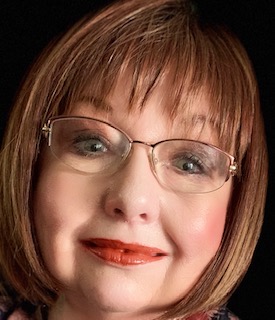
Peer Grief Helper Profile: Janice Kaplan
By Kerry J. Bickford, VOICES Editor
Five days after losing her youngest son to an overdose in 2013, Janice Kaplan was back at work. Her bereavement time was up, and she wasn’t sure what she would do at home, anyway, except feel sad. So, she says, this kept her “brain occupied” and helped her through the first three years without a whole lot of support from anywhere else. Then, in 2016, she attended her first GRASP group, where she found she “couldn’t even speak without crying.” She had protected her feelings for so long -- but was finally in a room where others knew exactly how she felt. She opened up and told her story, and thus began her healing.
Brandon Bettencourt, the youngest of three brothers, was a sweet and lovable child who struggled with learning disabilities from a very early age -- which contributed to low self-esteem and difficulties fitting in at school both academically and socially. To make matters even worse, he began to gain weight, which contributed to his feeling of not fitting in. Janice tried her best to support him -- even attempting to encourage him to go to the gym with her at one point -- but he had too many self-doubts.
Once out of school, Brandon was able to apply and qualify for disability assistance and, with the help of Mass Rehab, began to study for a tattoo license. It turned out he was a naturally gifted artist, and he began designing tattoos. This was a huge step forward as it increased his self-esteem and provided him with a monthly income, in addition to his disability allowance.
Janice is not sure when Brandon began experimenting with drugs, but she knows that at this point, he was smoking weed. He spent time living with his older brothers, both of whom struggled with substance abuse. The details are still somewhat blurry for Janice, but she knows now that Brandon was using oxycodone and slowly became dependent on it. When he realized he had a problem and tried to wean himself off the pills, he purchased Suboxone on the street and used it” to prevent him from getting drug sick. When that became unavailable, he turned to heroin, which his brother warned him “not to do when you’re alone.” Janice knew nothing about any of this and was stunned when her middle son informed her that he had found Brandon on the bathroom floor. He was dead at 36 years old.
Janice was at a loss for what to do next. Her husband, Brandon’s stepfather, did not grieve in the same way -- and she didn’t know anyone who had experienced a similar loss. There were groups for cancer survivors and people in recovery, but there was nothing for a mother who had lost her child to an overdose. She felt sad and guilty and wished she could have saved him -- and even tried EMDR (a type of therapy for trauma) to see if that would provide some relief. She isn’t sure how she got through the years that followed, but she kept busy at her job and raising a granddaughter. When she heard about a GRASP (Grief Recovery After Substance Passing) group that met at Salem Hospital, she attended her first meeting -- three years after Brandon had passed. She finally found a group of kindred spirits who knew what she had endured and with whom she could talk openly about her grief and the disease of addiction. She was able to sort through what had happened to Brandon, and the story finally came together.
Two years after joining this group and attending faithfully, the GRASP leaders asked Janice if she would be willing to take over the facilitation of the Salem group. She attended the SADOD Peer Grief Group Facilitator training to increase her knowledge and skills before assuming this new role. Soon after, she joined a network of peer grief helpers for whom SADOD facilitates Saturday morning meetings. This group of peer helpers share information, education, experiences, and peer support twice a month. It was beneficial to her, as the leadership transition created a turnover in membership, and the group started sluggishly, as many groups do. Janice brought her concerns to the group, and with the supportive feedback of her peers, she persevered. She sat through several ZOOM meetings when she was the only person there “just in case someone came late.” It soon paid off after she was there for someone in crisis, and from then on, she has slowly begun to rebuild the membership -- a testimony to her unwavering dedication to helping others.
Her courage to listen and lead by being there for others in the worst of times is a powerful part of her story -- particularly in recognition of the fact that she suffered in silence for so long. She demonstrates, by example, that it is never too late to ask for help, and there is always someone, somewhere who is willing to listen.
